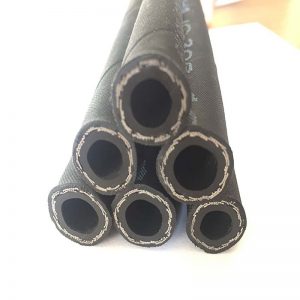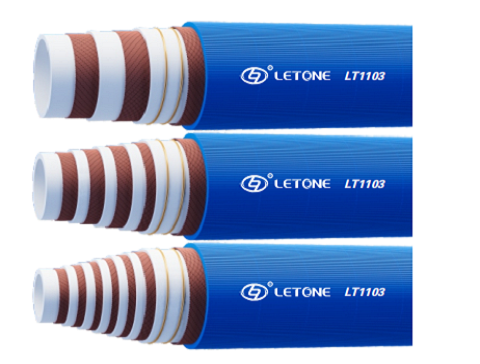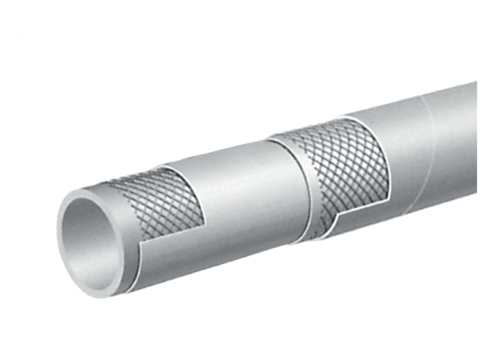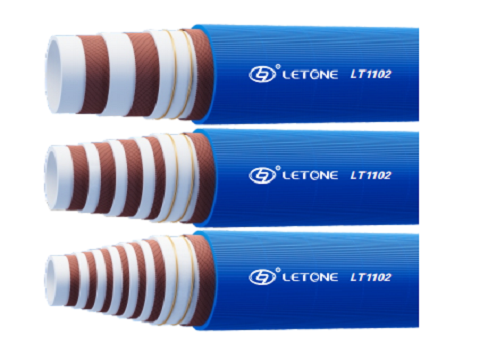Drainage pipes are very important at home. When they are blocked, it can cause various pipeline related problems. It is important to always keep the drainage pipes clean.
Hydraulic jetting is one of the best methods for cleaning clogged sewers and drainage pipelines. This method uses high-pressure water to remove all blockages. It is safer and more effective than other drainage pipe cleaning methods (such as plug-in or snake form).
Be cautious when using high-pressure drainage hoses
Hydraulic spraying is an effective method for clearing blockages in pipeline systems. Unlike traditional drainage pipe cleaning methods such as plungers, spiral drills, or serpentine pipes, these methods require pushing and poking blockages to remove them, while hydraulic jetting can quickly eliminate hard blockages without damaging your pipeline.
A sewer nozzle is a slender hose with a nozzle at one end and a nozzle for forward and backward spraying at the other end. The front nozzle uses water to break through the blockage, while the rear nozzle pushes the hose into the pipeline for cleaning.
The pressure of the injection hose is measured in PSI units. However, length and diameter can affect the operator's feeling during use. As the length of the hose increases, the pressure at the nozzle will decrease.
Before starting to use the hose, please ensure that you are in a safe area. Wear protective clothing and goggles when operating hoses. In addition, you should also avoid working at heights as hoses may fall and cause injury. You should also always secure the spray attachment to prevent it from falling.
Specification and model of high-pressure drainage pipe
The high-pressure drainage hose can withstand water pressure of up to 10000 psi. They are also thicker than regular garden hoses and do not kink or curl like standard hoses. These hoses come in various sizes, lengths, and materials to choose from. Some are even installed on reels to prevent hoses from getting tangled and make them easier to store.
The handheld drainage spiral drill is an effective tool for eliminating soft blockage in residential drainage pipes. They are equipped with bi-directional injectors to break down blockages. They can also bypass sharp turns and curves. They are unable to clear serious blockages.
 Passive suction is another method of cleaning drainage pipes. Closed drainage tubes, such as Penrose drainage tubes, are commonly used in veterinary practice and are made of soft, non radiative latex that is easy to place and can be cut into any size. They are also very cheap and easy to handle. These drainage tubes can be used for wounds and after surgery to prevent infection and fluid accumulation. They can also be used in animal cages and dog kennels to prevent urine accumulation. The successful use of drainage tubes requires appropriate placement, monitoring, and removal time to minimize complications.
How should high-pressure drainage pipes be stored?
Drainage pipe spraying or hydraulic spraying is one of the most effective methods for removing blocked drainage pipes. Unlike liquid drainage cleaners that require puncturing blockages, hydraulic jetting uses the power of water to cut hardened grease and dirt, tree roots, and other obstacles. This process can also reduce bacteria and eliminate the odor generated by the decomposition of wastewater.
Hydraulic jetting can reach blocked pipelines that traditional pipeline tools cannot reach, such as snakes. This is particularly true in restaurants, multi family homes, and other institutions involved in food services, where the vast majority of drainage blockages are grease.
High quality high-pressure hoses should be lightweight and have low sliding resistance, which will increase their range of use. Some are mounted on reels to make it easier to roll them up when not in use. This can also prevent entanglement. Keep the hose away from chemicals and direct sunlight. It is also a good idea to store the hose in a clean, dry, non kinked, and non lying position. This will extend the service life of the hose and avoid expensive maintenance costs.
Passive suction is another method of cleaning drainage pipes. Closed drainage tubes, such as Penrose drainage tubes, are commonly used in veterinary practice and are made of soft, non radiative latex that is easy to place and can be cut into any size. They are also very cheap and easy to handle. These drainage tubes can be used for wounds and after surgery to prevent infection and fluid accumulation. They can also be used in animal cages and dog kennels to prevent urine accumulation. The successful use of drainage tubes requires appropriate placement, monitoring, and removal time to minimize complications.
How should high-pressure drainage pipes be stored?
Drainage pipe spraying or hydraulic spraying is one of the most effective methods for removing blocked drainage pipes. Unlike liquid drainage cleaners that require puncturing blockages, hydraulic jetting uses the power of water to cut hardened grease and dirt, tree roots, and other obstacles. This process can also reduce bacteria and eliminate the odor generated by the decomposition of wastewater.
Hydraulic jetting can reach blocked pipelines that traditional pipeline tools cannot reach, such as snakes. This is particularly true in restaurants, multi family homes, and other institutions involved in food services, where the vast majority of drainage blockages are grease.
High quality high-pressure hoses should be lightweight and have low sliding resistance, which will increase their range of use. Some are mounted on reels to make it easier to roll them up when not in use. This can also prevent entanglement. Keep the hose away from chemicals and direct sunlight. It is also a good idea to store the hose in a clean, dry, non kinked, and non lying position. This will extend the service life of the hose and avoid expensive maintenance costs.







